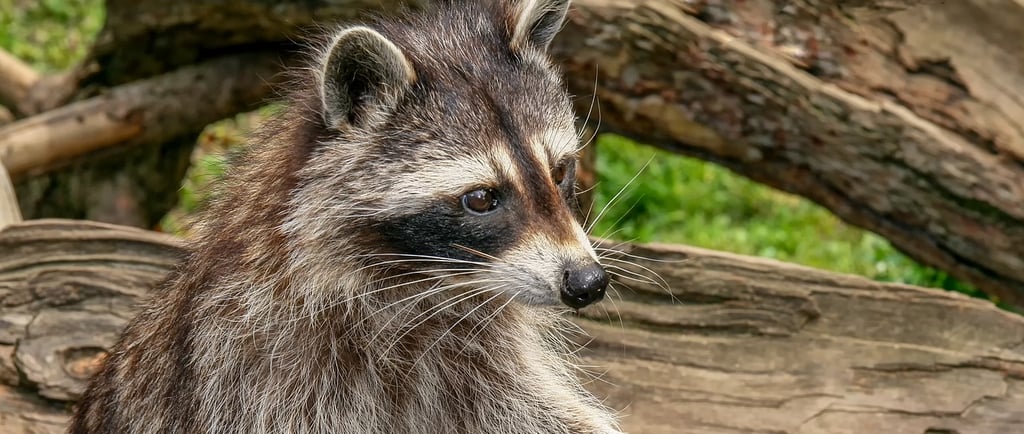🐾The Masked Marvel of the Forest - The Raccoon🦝
Wellcome into the marvelous world of animals with the Animal Story Folders 🦝🦋🐾, my favourite material found in the Biology chapter Introducing Animals! 🌿 These folders are designed to ignite curiosity and prepare children for independent research. Through engaging oral presentations and beautifully organized folders, children explore essential topics like animal names, habitats, diets, physical features, reproduction, life cycles, and predators. This material provides a foundation for critical research skills while fostering a deep connection to the animal kingdom. Whether it’s uncovering the secrets of a raccoon’s night vision 🦝, a butterfly’s life cycle 🦋, or the survival tactics of a snow leopard 🐆, these folders encourage children to ask questions and seek answers.🐾📚
BIOLOGY STORIES
11/28/20243 min read


Sometimes, as dusk 🌙 settles across North America, you might catch sight of a clever little creature with a black mask 🦝 around its eyes. It might be scurrying across a backyard, rummaging through a forest 🌳, or even perched boldly on a fence. That’s the raccoon, or Procyon lotor. The name Procyon comes from Greek, meaning “before the dog,” as raccoons are active during the hours when the world is quiet and dogs 🐕 are resting. You’ll recognize a raccoon not only by its mask but also by its bushy, ringed tail 🌀 and its hand-like paws that seem to explore and grasp everything it touches, curious just like a young child.
Raccoons are excellent climbers 🧗♂️ and swimmers 🏊♀️. Their bodies, about 40-70 cm long (excluding their tail), are sturdy yet agile, and they weigh between 3.5kg to 9kg, about the size of a small dog 🐩 or a large pumpkin 🎃! Their fur is thick and grayish-brown, helping them stay warm in the colder months ❄️. In winter, you may not see them as often, because they rest 💤 for long periods, though they don’t fully hibernate.
What makes raccoons truly fascinating are their front paws ✋. They have five long, nimble fingers that act almost like human hands 🤚! These paws allow them to open jars, unlock doors 🚪, open bins and everything food 🍓even dive under water if they spot a delicious treat💧. If you watch a raccoon near a stream, you might see it washing its food. Scientists aren’t sure why they do this, but it’s amazing to watch!
Did you know that occasionally, an albino raccoon is born? These raccoons are very rare and have white fur, pink eyes 👀, and pink noses. Without the usual dark markings, albino raccoons are easier for predators 🦅 to spot, which makes their survival more difficult in the wild. If you ever see one, it’s like spotting a treasure in nature!
Raccoons are omnivores 🍴, which means they eat just about anything ! In the wild, they feast on nuts 🥜, berries 🍇, insects 🐜, frogs 🐸, and even fish 🐟. In urban areas, they are known for robbing your trash bins 🗑️, earning them the nickname "nature's little bandits." Despite their reputation for mischief, raccoons play an important role in the ecosystem 🌎. By eating pests and spreading seeds 🌱, they help maintain balance in the environment.
Raccoons have long list of predators 🦅 like coyotes 🐺, great horned owls 🦉, and bobcats 🐆. However, their biggest threat is humans 👣. Roads, traps, and loss of habitat are major challenges they face. That’s why scientists 🧑🔬 study raccoons to better understand how to protect them and their habitats 🏞️. Did you know raccoons are native to North America but have spread as far as Europe 🌍 and Japan 🇯🇵? People all over the world are fascinated by their intelligence 🧠 and adaptability.
In some Native American traditions, the raccoon is seen as a symbol of cleverness 💡 and resourcefulness 🔧. Their masked face has even made them a popular figure in stories 📖 and folklore. I wonder, what would a raccoon think of our human inventions? Would they figure out how to use them too?
📜 Scientific Name: Procyon lotor
📏 Order: Carnivora
🌳 Family: Procyonidae
📐 Average Size: 40cm - 70cm (16in - 28in)
⚖️ Average Weight: 3.5kg - 9kg (7.7lbs - 19.8lbs)
🕰️ Lifespan: 2 - 5 years in the wild, up to 20 years in captivity
✨ Unique Feature: Five-fingered paws for dexterity
Let's see what else we can find in this Animal Folder about The Raccoon.
Now that we’ve discovered so many amazing things about the raccoon, I wonder—what’s your favorite animal? 🐾 Maybe it’s one you already know a lot about, or perhaps there’s an animal you’ve always wanted to learn more about.
You can use what we’ve done today as your guide to create your very own animal folder or booklet 📚! Think about including details like the animal’s name, where it lives, what it eats, its unique features, and its predators. You can add drawings, fun facts, or even tell a story about your animal!
When you’re done, you can share your folder or booklet with us. We can all learn something new from your research, and you’ll be the expert on your favorite animal! 🌍✨ So, with what animal you will go on adventure research ?
With Montessori joy,
Vanina 😊

